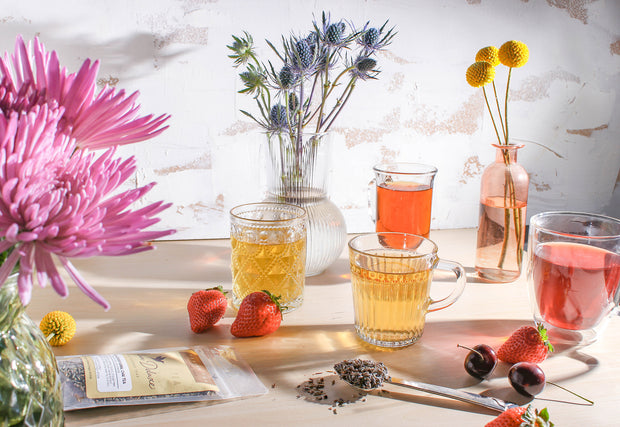Expressing gratitude and cultivating (and investing in) high-quality relationships are two of the best things I have done to create a life that I love. In the moments when I have told people why I am grateful for them, I can see how much those words matter.
I believe we should be saying them all the time. I also believe that it’s time to shift the way we practice gratitude and get a bit more creative. It's not brainstorming a list of "Things We're Grateful For," but about taking gratitude into real life.
Here are some ideas.

Handwritten Notes
Okay, so the “thank you note” isn’t exactly a new concept. But what if you send a handwritten letter to someone because of how they made you feel? Or because of something they wrote? Or because their advice was really valuable?
I think they’d be floored.
I keep a running list of people who have influenced me, inspired me, helped me along, or otherwise positively shaped my path. Every couple of weeks, I sit down and write three or four thank you notes. No strings attached, no reply required. This kind of thank you note isn’t transactional — gift for note — it’s a tangible expression of the impact that this person has made.
Circle
I have a personal practice of cultivating gratitude before every meal. If I’m alone, that means just closing my eyes and giving thanks before I begin eating. If I’m with another person or a group, I like to lead folks in a little gratitude sharing. My friends used to make fun of me for this; now they insist.
Everyone holds hands in a circle and says at least one thing for which they’re grateful. It can be a great thing that’s happened in their lives in the last week. Maybe it’s simply the food and the people who prepared it.
I love this practice because not only is the energy of an entire dinner party giving thanks pretty potent, but I always learn something about the people at the table. I’ve seen it spark insightful questions or lead to interesting conversation. It really connects the people to the moment, the food, and each other.

Altar (or Refrigerator Notes)
Create a space in your home where you leave written reminders of thankfulness and generosity. Having a visual touchstone for this practice helps me to stay present with the sensation of gratitude, even when doing daily tasks.
For me, this happens in two places. This is on my altar, where I meditate every day, and on my refrigerator. I chose one sacred space and one spot that’s a bit more mundane. I place little notes to myself or other representations of things for which I’m thankful and it brings me into the present. It reminds me to locate the joy.
I urge you to pick one or two places in your home where you can create a reminder of gratitude for yourself. It should be somewhere you’ll definitely see it, like by your front door or a bathroom mirror.
Specificity: Get At the Why
Journaling can be a powerful way to express gratitude, but I urge you to go beyond the “5 things I was grateful for today” model. I’m grateful for my friends — but that doesn’t do justice to the remarkable people they are and how they positively impact my life. Listing things can feel like rote platitudes after a while. So try this:
When you’re journaling, be specific. List your five things a day, if you like, but next to each write why you’re grateful. What is it about that person, experience, place, thing that makes you so appreciative? Why are you thankful? How does it impact you?
Listing the same things over and over can rob them of their meaning and gratitude can lose its potency. By inviting the why into the picture, it’s easier for me to tap into feelings of gratitude when I need them.

Reframe the Tough Stuff
This idea actually comes from the Yoga Sutras of Patanjali, a yogic text that suggests replacing negative thoughts with positive thoughts. Now, this isn’t what Joanna Macy calls “premature equanimity,” but it’s about embracing nuance and making meaning from an undesirable situation. An example might be, instead of complaining about my job, I might say, “It’s tough, but I’m so grateful to have insurance and to be receiving a steady paycheck until I figure out what’s next.”
When my mom was diagnosed with cancer, I regularly cultivated gratitude for her doctors, the fact that she had insurance, and the medicine she was receiving. It had a huge impact on the way I processed that experience. While that’s a somewhat extreme example, I think it can be applicable in a range of less-than-ideal situations.
Ultimately, gratitude is a force for good in our lives. It allows us to claim our power and make deeper meaning of our experiences and relationships. Thankfulness reframes feelings of inadequacy or fear, and gives us access to beauty and love. When we commit to cultivating this appreciation, we gain a new kind of clarity and more meaningful connection.
All photos are courtesy of author.

![Spring Break Tea Variety Pack [6-Pack Variety of Flavors]](http://www.plumdeluxe.com/cdn/shop/files/spring-break-pack.jpg?v=1740682266&width=165)















